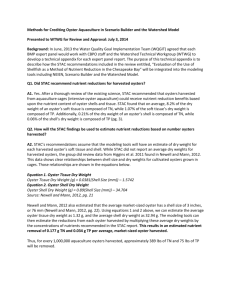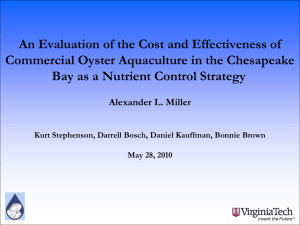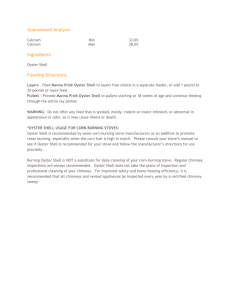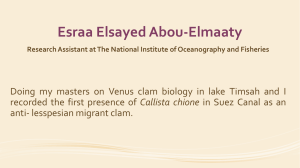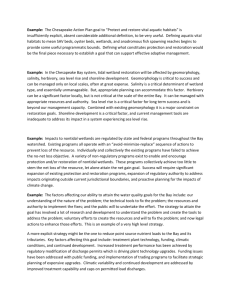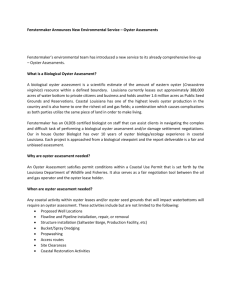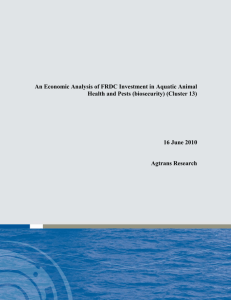321_Luckenbach2014 - Chesapeake Research Consortium
advertisement
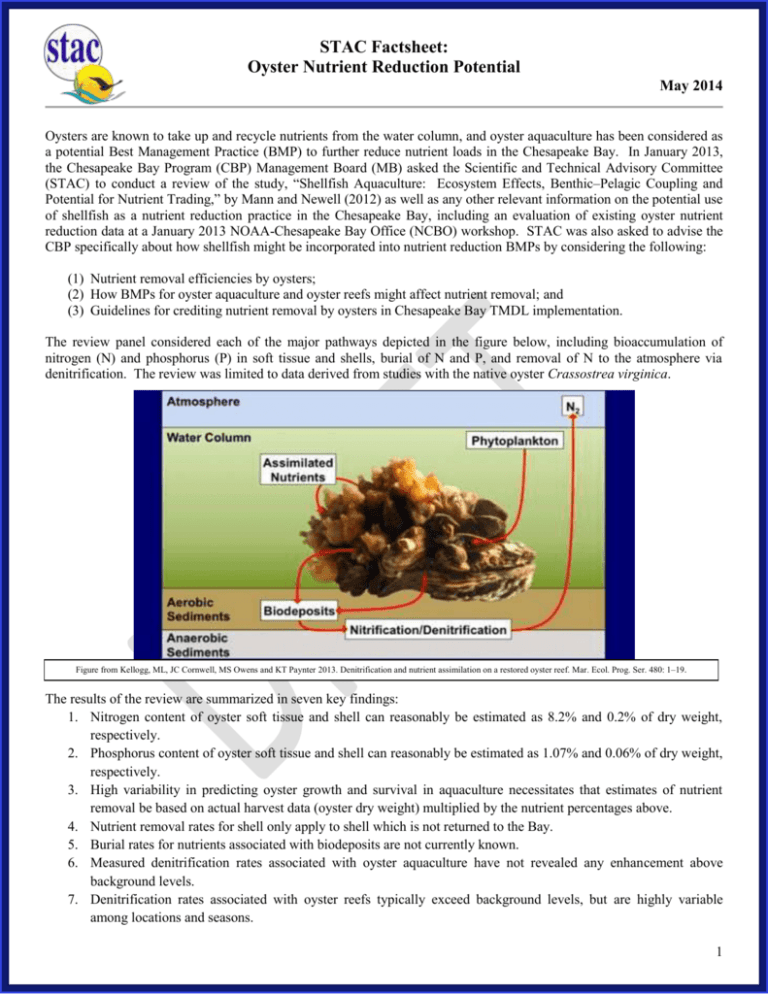
STAC Factsheet: Oyster Nutrient Reduction Potential May 2014 Oysters are known to take up and recycle nutrients from the water column, and oyster aquaculture has been considered as a potential Best Management Practice (BMP) to further reduce nutrient loads in the Chesapeake Bay. In January 2013, the Chesapeake Bay Program (CBP) Management Board (MB) asked the Scientific and Technical Advisory Committee (STAC) to conduct a review of the study, “Shellfish Aquaculture: Ecosystem Effects, Benthic–Pelagic Coupling and Potential for Nutrient Trading,” by Mann and Newell (2012) as well as any other relevant information on the potential use of shellfish as a nutrient reduction practice in the Chesapeake Bay, including an evaluation of existing oyster nutrient reduction data at a January 2013 NOAA-Chesapeake Bay Office (NCBO) workshop. STAC was also asked to advise the CBP specifically about how shellfish might be incorporated into nutrient reduction BMPs by considering the following: (1) Nutrient removal efficiencies by oysters; (2) How BMPs for oyster aquaculture and oyster reefs might affect nutrient removal; and (3) Guidelines for crediting nutrient removal by oysters in Chesapeake Bay TMDL implementation. The review panel considered each of the major pathways depicted in the figure below, including bioaccumulation of nitrogen (N) and phosphorus (P) in soft tissue and shells, burial of N and P, and removal of N to the atmosphere via denitrification. The review was limited to data derived from studies with the native oyster Crassostrea virginica. Figure from Kellogg, ML, JC Cornwell, MS Owens and KT Paynter 2013. Denitrification and nutrient assimilation on a restored oyster reef. Mar. Ecol. Prog. Ser. 480: 1–19. The results of the review are summarized in seven key findings: 1. Nitrogen content of oyster soft tissue and shell can reasonably be estimated as 8.2% and 0.2% of dry weight, respectively. 2. Phosphorus content of oyster soft tissue and shell can reasonably be estimated as 1.07% and 0.06% of dry weight, respectively. 3. High variability in predicting oyster growth and survival in aquaculture necessitates that estimates of nutrient removal be based on actual harvest data (oyster dry weight) multiplied by the nutrient percentages above. 4. Nutrient removal rates for shell only apply to shell which is not returned to the Bay. 5. Burial rates for nutrients associated with biodeposits are not currently known. 6. Measured denitrification rates associated with oyster aquaculture have not revealed any enhancement above background levels. 7. Denitrification rates associated with oyster reefs typically exceed background levels, but are highly variable among locations and seasons. 1 STAC Factsheet: Oyster Nutrient Reduction Potential May 2014 Conclusion Although enhanced denitrification has been observed in association with oyster reefs, the effect has been highly variable and it currently is not possible to provide reliable rates for inclusion in the TMDL implementation process without direct measurements on individual reefs. There is a need for additional information related to practices or conditions that can lead to enhanced denitrification before the development of specific BMPs can be considered. It should be noted that for the purpose of the review panel’s considerations, the definition of oyster aquaculture was limited to intensive aquaculture, which involves the grow-out of hatchery-produced oysters, and did not include extensive aquaculture, a term often applied to the process of transplanting wild oysters or shell in new areas. The former practice places and removes new oysters in the Bay; the latter moves wild individuals that are already present within the bay or enhances settlement of wild oysters and is thus more appropriately considered a fishing practice and unlikely to receive credit as a BMP for nutrient removal. Best Management Practice Applications Limited available data on the effects of oyster aquaculture on nutrient fluxes prevent the development of a full suite of BMPs at this time. However, a few basic issues are highlighted in hopes that they will drive future research and provide a basis for developing new BMPs for nutrient management in oyster aquaculture. Oyster aquaculture, whether suspended, on-bottom cage, or uncaged spat-on-shell bottom culture, increases the movement of organic nitrogen compounds from the water column to the bottom through feeding and biodeposition (feces, pseudofeces) by the oysters. Oyster aquaculture has the potential to enhance denitrification above background levels for soft-bottom benthic habitats, but through the same processes of feeding and biodeposition, oyster aquaculture also has the potential to deplete oxygen in near bottom and pore waters, reducing nitrification (and hence coupled nitrificationdenitrification) and degrading local bottom conditions. The rates observed for natural and/or sanctuary reefs cannot necessarily be applied to spat-on-shell aquaculture. Subject to the caveats listed above, the review panel agreed with the 2012 Newell and Mann report that nutrient removal from harvest of aquacultured oysters can reasonably be estimated using existing relationships as a percentage of dry weight biomass harvested annually. But again, incorporation of nitrogen removal via denitrification into TMDL implementation plans is currently unsupported both for oyster aquaculture and for oyster reef restoration due to lack of data to clarify the conditions under which enhancement of denitrification from oysters can provide substantial water quality benefits. Reference: Newell RIE and R Mann. 2012. Shellfish Aquaculture: Ecosystem Effects, Benthic–Pelagic Coupling and Potential for Nutrient Trading. A Report Prepared for the Secretary of Natural Resource, Commonwealth of Virginia. 13 pp. 2

